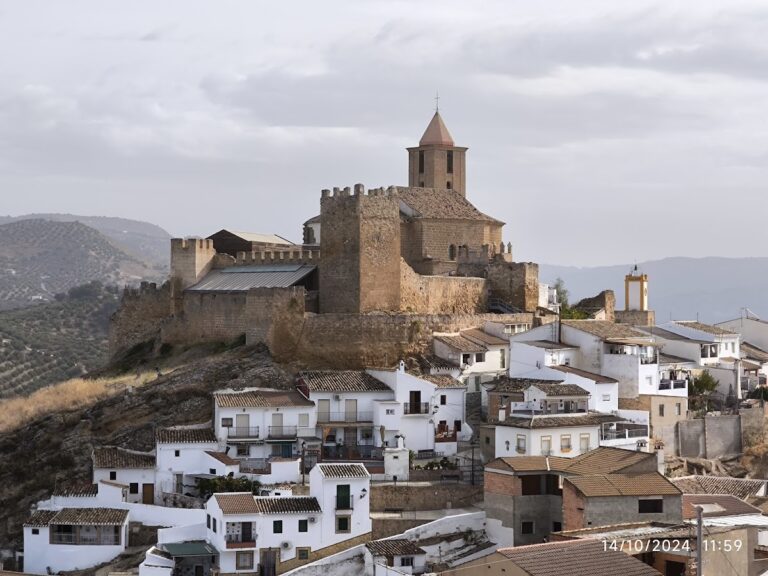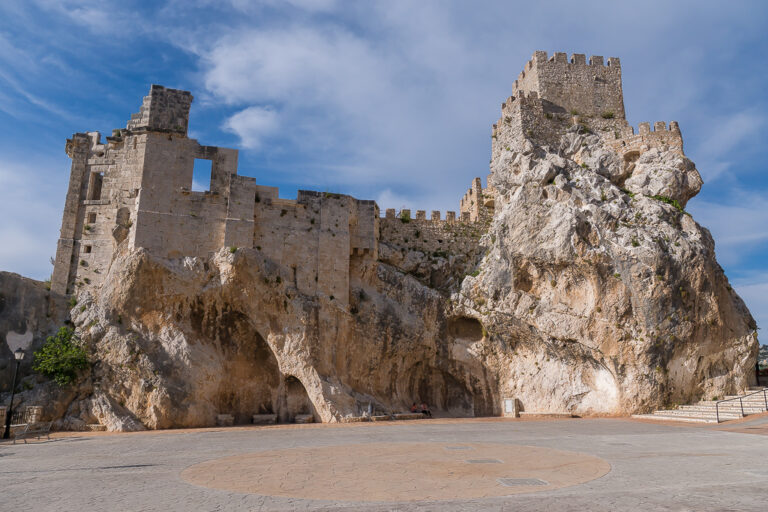Castillo Anzur: A Medieval Fortress near Puente Genil, Spain
Visitor Information
Google Rating: 4.1
Popularity: Low
Google Maps: View on Google Maps
Official Website: cordobapedia.wikanda.es
Country: Spain
Civilization: Unclassified
Remains: Military
History
Castillo Anzur is a medieval fortress situated near the town of Puente Genil in Spain, originally established by Hispano-Muslim builders. Its location on a prominent hill made it a key defensive position from the 10th century onward, overseeing the surrounding territory and nearby communication routes.
Archaeological evidence shows the site’s occupation extends back much further, with ceramics from the Late Bronze Age alongside Iberian and Roman-era remains discovered, indicating continuous human presence before the fortification. The castle and its surrounding settlement took shape during the 10th century under Muslim control, serving as a strategic stronghold in the shifting political landscape of Al-Andalus.
During the 12th century, the Almoravid dynasty enhanced the fortress by constructing a rammed earth tower, reflecting their architectural style and military needs. The castle commanded routes leading from Aguilar de la Frontera (historically known as Poley) and Estepa (Istabba). In 1126, the nearby Battle of Arnizol was fought between Christian forces led by Alfonso I of Aragón and the Almoravids. This battle ended in a Christian victory but did not result in immediate territorial changes.
The fortress transitioned to Christian hands through a treaty signed by King Fernando III the Saint around 1240–1241. Following its conquest, the site underwent repopulation efforts. Initially, the castle belonged to the Córdoba council but was later transferred in 1258 to the bishopric of Córdoba, remaining under ecclesiastical authority until the early 14th century before being incorporated into the Crown’s holdings. The lordship of Castillo Anzur extended across an area roughly bounded by the Genil River, the Roman Villa of Fuente Álamo, and near Moriles.
In the latter half of the 14th century, King Pedro I of Castile granted the lordship of Castillo Anzur to Vasco Alfonso de Sousa in 1356. This was exchanged in 1372 to Gonzalo Fernández de Córdoba y Biedma, establishing a permanent connection with the House of Aguilar. Given its location on the frontier between the Crown of Castile and the Nasrid Kingdom of Granada, the fortress held strategic importance during the Granada War in the late 15th century. King Fernando the Catholic camped in the vicinity of Castillo Anzur in 1482 and again in 1485, highlighting its military significance during the Christian Reconquest.
After these conflicts, the site’s population declined following the founding of the nearby town La Puente de Don Gonzalo (modern Puente Genil), which served to commemorate Christian victories over Muslim forces in the region. The castle remains a symbol of the area’s layered history, recognized officially in 1985 when it and its surroundings were declared a protected cultural site and adopted onto Puente Genil’s coat of arms.
Remains
The most prominent feature still standing at Castillo Anzur is a large tower built by the Almoravids during the 12th century. This nearly square tower measures approximately 10.33 meters by 8.72 meters and is constructed using rammed earth, known locally as tapial, a technique involving compacting layers of earth to form solid walls. Positioned at one of the highest points in the region at 456 meters above sea level, the tower commands expansive views of the landscape, making it visible from multiple locations along the nearby Vía Verde de la Subbética trail.
Surrounding the tower are fragments of defensive walls that once enclosed the castle’s settlement area, which covered around 2,000 square meters. These remnants indicate the extent of the fortified site during its period of use but now survive only in partial sections. The layout of the castle’s lordship shaped a triangular territory, naturally bounded by landmarks such as the Genil River and local Roman sites, underscoring the strategic choice of its placement.
Before restoration, the tower suffered from neglect, including damage from graffiti and structural weakening due to lack of maintenance. Between 2008 and 2011, the City Council of Puente Genil undertook a restoration project to stabilize and preserve the tower, led by architect Juan José Pérez Borbujo. This intervention focused on reinforcing the rammed earth and clearing accumulated debris to secure the structure for the future.
Archaeological investigations led by Francisco Esojo Aguilar uncovered prehistoric, Iberian, and Roman ceramics at the site, now preserved in the local historical museum. These finds provide valuable insight into the long history of human activity in the area prior to the castle’s construction. Although no detailed interior features or decorative elements from the castle have been documented, the surviving architecture and archaeological materials together illustrate the layered history and enduring significance of Castillo Anzur.










